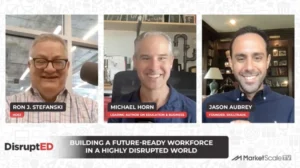What a Supply Side Recession Means For Labor
A Goldman Sachs report from August 2022 indicates the U.S. could slip into a recession by the middle of 2023. However, they predict a mild recession that would see only a 1% increase in the current unemployment rate. Unlike demand-side recessions that hit the economy hard, often resulting in layoffs, Zaid Rahman, Founder & CEO of Flexbase, believes the U.S. economy is dealing with a supply-side recession. “If you look at the economy, consumers are still buying a lot. Psychologically, while consumer sentiment on the economy has decreased, that’s not reflected in the actual numbers. If you just look at consumer spending, it’s growing quite a lot”.
The real GDP numbers fell for the past two consecutive quarters, but labor numbers still paint a good picture. August unemployment rates rose from 3.5% to 3.7%, but employers still added 315,000 jobs, indicating companies are still in a hiring phase. There is still consumer demand fueling the economy but not enough supply. “There’s the obvious supply chain disruption during Covid that still is the case,” Rahman said. “Surprisingly, places like China and Southeast Asia have still not recovered from a supply chain productivity perspective, and so we still see quite a significant amount of general supply chain issues”.
One question remains about how the Fed’s decision to increase interest rates will impact the supply and demand equation. Theoretically, the rising interest rates will slow the record inflation, thus slowing demand. But what happens if demand softens when the supply chain begins to deliver? Could overstocked inventories turn a supply-side recession into a demand-side one? And in the housing market, which saw a boom during the pandemic, skyrocketing inflation and rising interest rates are already impacting home sales and prices. Several Western states report housing price drops of 5% or more in the past month.
Did the great resignation potentially stave off massive layoffs? With a softening economy, those job numbers again predict how big and long a recession will be, but the picture might be cloudier than at first glance. If employers are short-staffed and have been managing a worker deficit, they may post fewer job openings and hire new workers at a slower pace. Flexible hours with a shorter workweek may keep overall numbers strong while operational costs scale back. One thing is sure: if the U.S. is in recession, it looks far different from any it experienced in its past.







